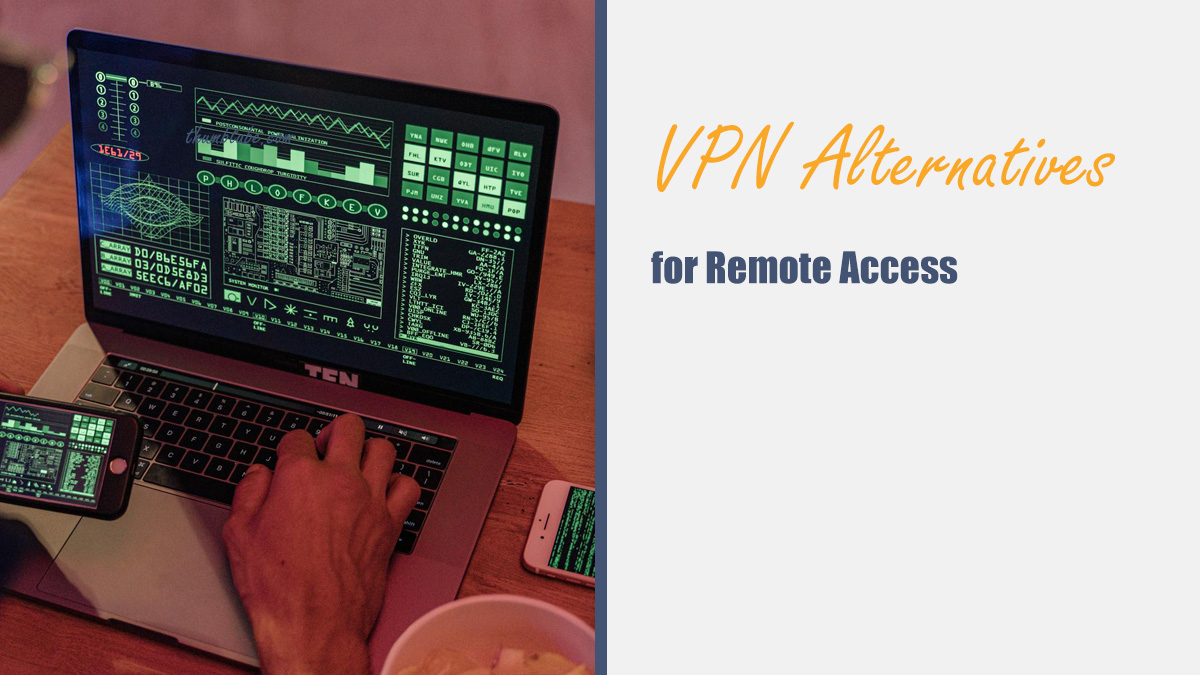With the rise of remote work, ensuring secure and reliable access to company resources has become a top priority for businesses and individuals alike. Traditionally, Virtual Private Networks (VPNs) have been the go-to solution for remote access, but they come with limitations such as latency, configuration complexities, and potential security risks. Fortunately, several alternatives offer better performance, security, and ease of use for remote access needs.
Why Look for VPN Alternatives?
While VPNs are widely used, they are not always the best solution. Here are some common drawbacks:
- Performance Issues: VPNs can slow down internet speeds due to encryption and rerouting of data.
- Security Concerns: Misconfigurations could expose vulnerabilities, and if a VPN server is compromised, it puts all connected users at risk.
- Complex Setup: Configuring and maintaining a VPN can be challenging, especially for non-technical users.
- Scalability Limitations: VPNs may struggle with growing organizations due to increased bandwidth requirements.
Top VPN Alternatives for Remote Access
Here are some modern alternatives that provide secure, efficient, and user-friendly remote access:
1. Zero Trust Network Access (ZTNA)
ZTNA is a security model that allows users to access applications and data based on identity verification rather than network location. Unlike VPNs, ZTNA ensures that users only get access to specific services instead of the entire network.
Advantages of ZTNA:
- Reduces the attack surface by granting access based on least privilege
- Provides enhanced security with identity-based authentication
- Offers seamless scalability without bandwidth concerns

2. Remote Desktop Protocol (RDP) with Secure Gateways
Microsoft’s Remote Desktop Protocol (RDP) allows users to remotely access their own desktop or a company server. While RDP alone can pose security risks, using it with a secure gateway or third-party security enhancements significantly reduces vulnerabilities.
Benefits of RDP with Security Layers:
- Allows full remote desktop access
- More suitable for IT administrators managing servers
- Works well with multi-factor authentication (MFA) for added security
3. Cloud-Based Remote Access Solutions
Cloud-based remote access solutions, such as TeamViewer, AnyDesk, and Chrome Remote Desktop, provide convenient and secure ways to connect to remote machines without traditional VPNs.
Why Choose Cloud Remote Access?
- Requires minimal configuration and is easy to use
- Often includes built-in encryption and authentication features
- Ideal for individuals or small businesses that need quick remote access

4. Secure Access Service Edge (SASE)
SASE is a cloud-based security framework that combines networking and security functions into a single service. It integrates ZTNA, firewall-as-a-service (FWaaS), and secure web gateways to improve security and performance.
What Makes SASE a Great VPN Alternative?
- Provides a unified approach to security and networking
- Improves performance by delivering security services close to the end-user
- Reduces reliance on traditional data centers
5. Software-Defined Perimeter (SDP)
SDP enhances security by requiring authentication before establishing network access. Unlike VPNs, which grant access to the entire network, SDP provides access to only the necessary resources based on user authentication.
How SDP Improves Remote Access:
- Eliminates the exposure of internal network resources
- Reduces the risk of unauthorized access
- Flexible and scalable for growing businesses
Choosing the Best Alternative for Your Needs
Selecting the right VPN alternative depends on your specific use case. Here’s a quick guide:
- For businesses requiring strong security: Zero Trust Network Access (ZTNA) or Software-Defined Perimeter (SDP) are ideal.
- For IT teams managing remote infrastructure: RDP with security layers is a solid choice.
- For individual users or small businesses: Cloud-based remote access solutions like AnyDesk or Chrome Remote Desktop are suitable.
- For enterprises focused on scalability and network security: Secure Access Service Edge (SASE) offers the best combination of security and performance.
Final Thoughts
Traditional VPNs are still useful in some scenarios, but they are no longer the only or best solution for remote access. Modern alternatives such as ZTNA, SASE, and SDP provide better security, performance, and scalability for businesses and individuals. By exploring these options, you can ensure a more secure and efficient remote work environment without the drawbacks of traditional VPNs.

